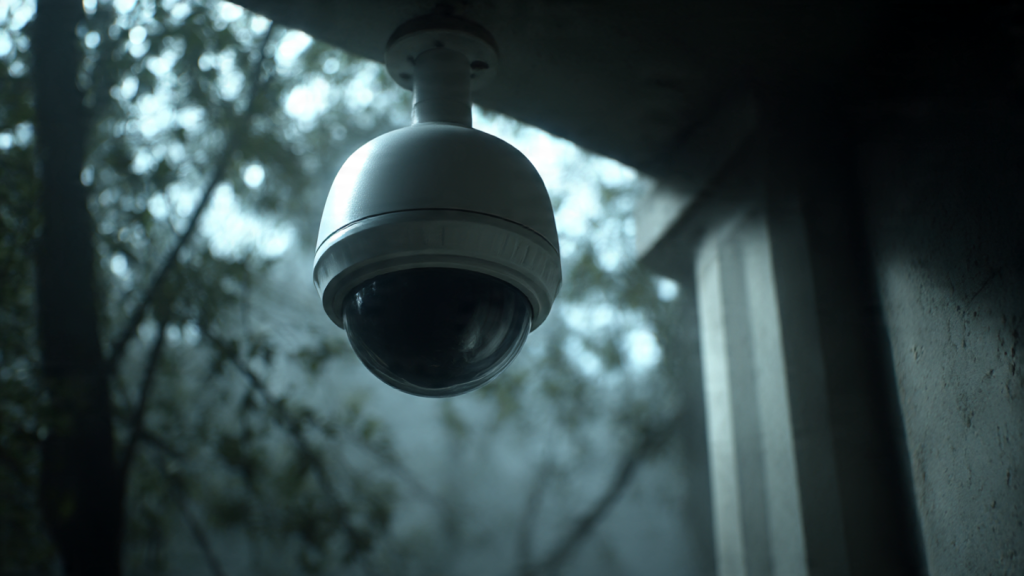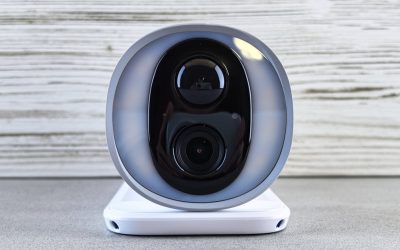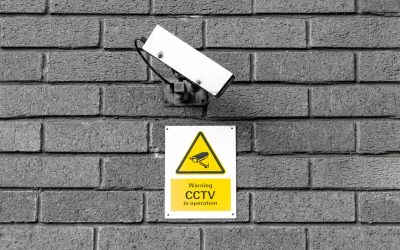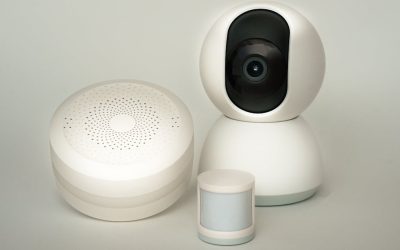Indoor vs Outdoor CCTV
In an age where security is paramount, Closed-Circuit Television (CCTV) systems have become indispensable tools for both residential and commercial properties. These systems serve as vigilant eyes, monitoring activities and deterring potential threats. Indoor and outdoor CCTV cameras play distinct roles in safeguarding premises, each tailored to meet specific security needs.
While indoor cameras focus on monitoring the interior spaces of a property, outdoor cameras are designed to withstand the elements and provide surveillance of the exterior surroundings.
Understanding the nuances of these two types of CCTV systems is essential for anyone looking to enhance their security measures.
The importance of CCTV cannot be overstated.
With crime rates fluctuating and the need for safety ever-present, investing in a reliable surveillance system is a proactive step towards protecting your assets and loved ones. Whether you are a homeowner wanting to keep an eye on your family or a business owner aiming to secure your premises, CCTV systems offer peace of mind. This article will delve into the differences between indoor and outdoor CCTV systems, considerations for installation, environmental factors, security needs, costs, and maintenance, ultimately guiding you in making an informed decision for your property.
Key Takeaways
- Indoor and outdoor CCTV serve different purposes and have different design and functionality.
- When installing indoor CCTV, consider factors such as camera placement and lighting for optimal surveillance.
- Outdoor CCTV installation requires weatherproof cameras and consideration of environmental factors such as sunlight and precipitation.
- Environmental factors and weather resistance are crucial for outdoor CCTV to ensure durability and longevity.
- Consider security and surveillance needs, as well as cost and maintenance, when choosing between indoor and outdoor CCTV for your property.
Differences in Design and Functionality
The design and functionality of indoor and outdoor CCTV cameras differ significantly, reflecting their intended use. Indoor cameras are typically smaller and more discreet, allowing them to blend seamlessly into the home or office environment. They often feature a wide-angle lens to capture expansive views of rooms while maintaining high-resolution images.
Many indoor models come equipped with advanced features such as motion detection, night vision, and two-way audio, enabling users to interact with individuals within the monitored space. Conversely, outdoor CCTV cameras are built to endure harsher conditions. They are generally larger and more robust, designed to withstand rain, wind, and extreme temperatures.
Outdoor cameras often come with weatherproof casings and infrared capabilities for night-time surveillance. Additionally, they may include features such as pan-tilt-zoom (PTZ) functionality, allowing users to adjust the camera’s angle remotely for comprehensive coverage of outdoor areas. The differences in design and functionality highlight the importance of selecting the right type of camera based on the specific security requirements of your property.
Considerations for Indoor CCTV Installation
When installing indoor CCTV systems, several factors must be taken into account to ensure optimal performance. First and foremost is the placement of the cameras. Strategic positioning is crucial; cameras should be installed in areas that provide maximum visibility while remaining unobtrusive.
Common locations include entryways, hallways, living rooms, and other high-traffic areas where monitoring is essential. It is also important to consider potential obstructions that could hinder the camera’s field of view. Another consideration is the type of indoor camera that best suits your needs.
Depending on the layout of your space and your specific security concerns, you may opt for fixed cameras that provide a static view or more versatile models with pan-and-tilt capabilities. Additionally, features such as motion detection can enhance the effectiveness of your indoor surveillance system by alerting you to any unusual activity. Finally, ensure that your indoor CCTV system is connected to a reliable power source and storage solution for recorded footage, as this will be vital for effective monitoring and review.

Considerations for Outdoor CCTV Installation
Outdoor CCTV installation presents its own set of challenges and considerations that differ from indoor setups. One of the primary concerns is ensuring that cameras are positioned to cover all vulnerable areas without blind spots. This often involves conducting a thorough assessment of the property’s exterior layout, identifying potential entry points such as doors and windows, as well as areas that may be prone to criminal activity.
In addition to placement, selecting the right outdoor camera is critical. Features such as weather resistance, night vision capabilities, and high-resolution imaging are essential for effective surveillance in varying conditions. Furthermore, outdoor cameras should be equipped with vandal-proof casings to prevent tampering or damage from external forces.
It is also advisable to consider integrating motion sensors that can trigger alerts or recording when movement is detected in monitored areas. By carefully considering these factors during installation, you can create a robust outdoor surveillance system that effectively protects your property.
Environmental Factors and Weather Resistance
Environmental factors play a significant role in determining the suitability of CCTV systems for both indoor and outdoor applications. For outdoor cameras, weather resistance is paramount; they must be able to withstand rain, snow, extreme heat, and cold without compromising functionality. Most outdoor CCTV cameras are rated with an Ingress Protection (IP) rating that indicates their level of resistance to dust and moisture.
A higher IP rating signifies better protection against environmental elements. In addition to weather resistance, outdoor cameras should also be equipped with features that enhance their performance in various lighting conditions. For instance, infrared technology allows cameras to capture clear images in low-light situations, making them ideal for nighttime surveillance.
Furthermore, considerations such as sunlight glare can affect image quality; therefore, selecting cameras with built-in sunshields or adjustable lenses can help mitigate these issues. By taking environmental factors into account when choosing CCTV systems, you can ensure reliable performance regardless of external conditions.
Security and Surveillance Needs
Understanding your specific security and surveillance needs is crucial when selecting between indoor and outdoor CCTV systems. For residential properties, indoor cameras may be sufficient for monitoring common areas and ensuring the safety of family members. However, outdoor cameras are essential for protecting against external threats such as burglary or vandalism.
In commercial settings, a combination of both indoor and outdoor cameras may be necessary to cover all aspects of security—from monitoring customer interactions inside a retail space to safeguarding the perimeter against unauthorized access. Moreover, different types of properties may have unique security requirements based on their nature and location. For instance, government buildings or healthcare facilities may require advanced surveillance systems with higher levels of security due to sensitive information or vulnerable populations.
Understanding these needs will help you determine the appropriate number of cameras required, their placement, and any additional features necessary for effective monitoring.
Cost and Maintenance
The cost associated with installing CCTV systems can vary widely based on several factors including the type of cameras chosen, installation complexity, and additional features required. Indoor cameras tend to be less expensive than their outdoor counterparts due to their simpler design; however, costs can escalate when advanced features such as high-definition imaging or smart technology are included. Outdoor installations may incur additional expenses related to weatherproofing and mounting equipment.
Maintenance is another critical aspect to consider when investing in CCTV systems. Regular upkeep ensures that your surveillance equipment remains functional and effective over time. This includes routine checks on camera positioning, cleaning lenses to prevent obstructions from dust or debris, and ensuring that software updates are applied promptly for optimal performance.
Additionally, it is wise to have a plan in place for addressing any technical issues that may arise—whether through professional servicing or troubleshooting guides provided by manufacturers.
Making the Right Choice for Your Property
In conclusion, selecting the right CCTV system for your property requires careful consideration of various factors including design differences between indoor and outdoor cameras, installation considerations, environmental challenges, security needs, costs, and maintenance requirements. By understanding these elements thoroughly, you can make an informed decision that aligns with your specific security objectives. Whether you opt for a comprehensive system that includes both indoor and outdoor cameras or focus on one type based on your unique circumstances, investing in quality surveillance technology will undoubtedly enhance your peace of mind.
With expert installation services available from companies like Alpha Security Corp—who provide tailored solutions for homes and businesses across Sydney—you can ensure that your property is well-protected against potential threats while enjoying the benefits of modern security technology. Ultimately, making the right choice will empower you to safeguard what matters most effectively.
When deciding between indoor and outdoor CCTV systems, it’s essential to consider the specific security needs of your property. Indoor cameras are typically used to monitor the interior of a home or business, providing a sense of security and peace of mind. On the other hand, outdoor cameras are designed to withstand the elements and deter potential intruders before they even reach your door. For those contemplating the installation of CCTV cameras at home, it’s worth exploring the benefits and considerations involved. An insightful article that delves into this topic is available here, offering valuable guidance on whether installing CCTV cameras is a worthwhile investment for your home security.
FAQs
What is the difference between indoor and outdoor CCTV cameras?
Indoor CCTV cameras are designed to be used inside buildings and are not weatherproof. Outdoor CCTV cameras are built to withstand outdoor elements such as rain, wind, and extreme temperatures.
What are the key features of indoor CCTV cameras?
Indoor CCTV cameras are typically smaller and more discreet, and they may have features such as night vision and motion detection. They are designed to capture clear footage in well-lit indoor environments.
What are the key features of outdoor CCTV cameras?
Outdoor CCTV cameras are larger and more robust, with weatherproof housing to protect them from the elements. They often have features such as infrared night vision, wide-angle lenses, and vandal-resistant casing.
Which type of CCTV camera is suitable for home use?
For home use, both indoor and outdoor CCTV cameras can be suitable, depending on the specific needs of the homeowner. Indoor cameras may be used to monitor the interior of the home, while outdoor cameras can be used to monitor the perimeter and outdoor spaces.
Which type of CCTV camera is suitable for business use?
For business use, both indoor and outdoor CCTV cameras may be necessary. Indoor cameras can be used to monitor indoor spaces such as offices and retail areas, while outdoor cameras can be used to monitor parking lots, loading docks, and other outdoor areas.
Can indoor CCTV cameras be used outdoors?
Indoor CCTV cameras are not designed to withstand outdoor elements and should not be used outdoors. Using an indoor camera outdoors can result in damage to the camera and poor performance in capturing footage.
Can outdoor CCTV cameras be used indoors?
Outdoor CCTV cameras can be used indoors, but they may be larger and more conspicuous than indoor cameras. However, they can still be effective for monitoring indoor spaces if the specific features of outdoor cameras are needed, such as weatherproofing or night vision.











